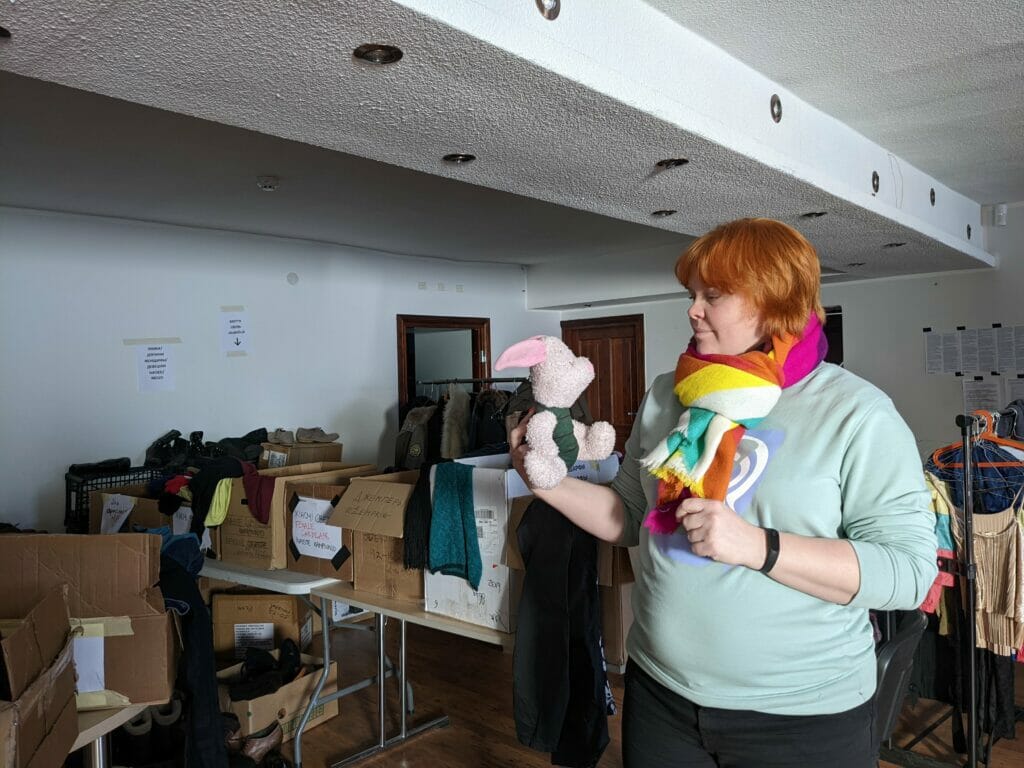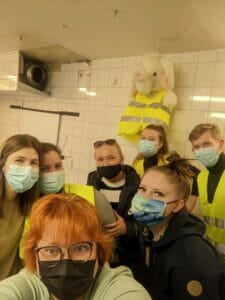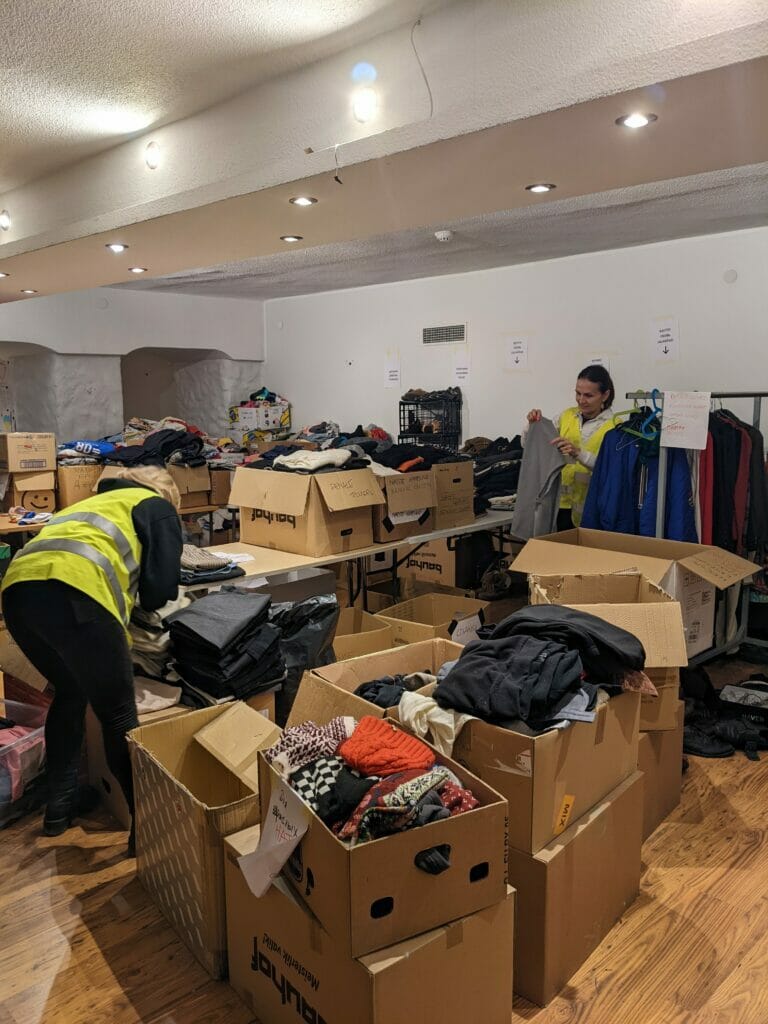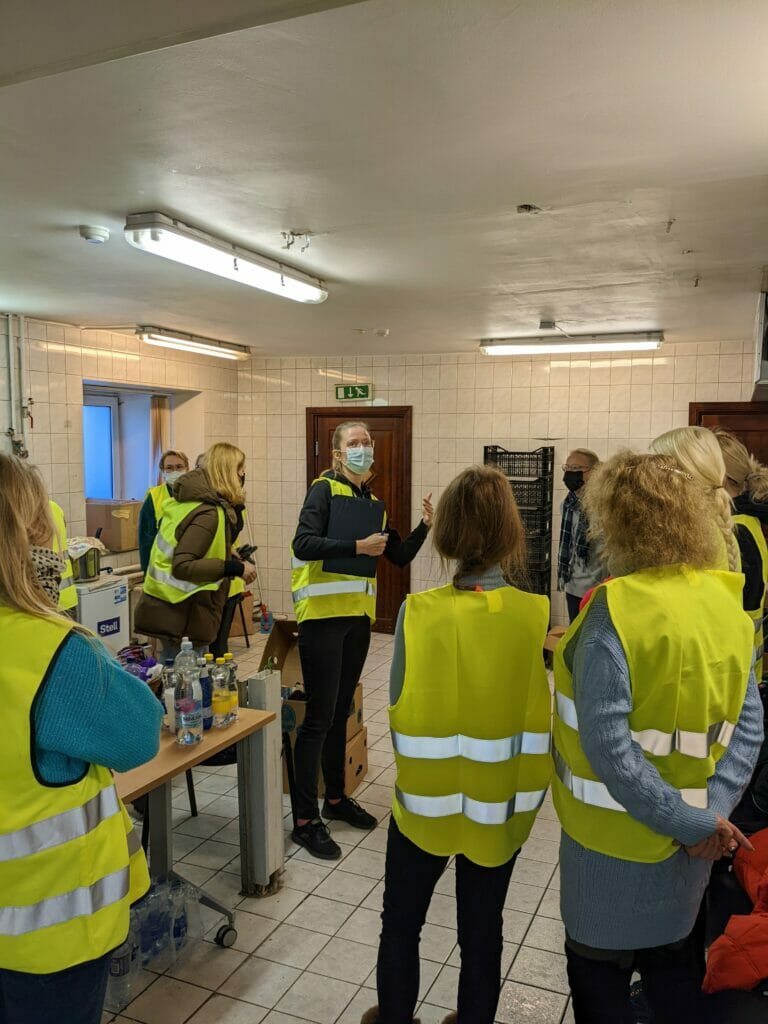Niine 2 is the address of the Põhja-Tallinn District of Tallinn City Administration. In early March 2022 the top floor of the building became the first registration office for refugees from Ukraine. The ground floor organically turned into the daily workplace for hundreds of volunteers that helped fresh arrivals navigate their new and unfortunate life situation.
We’re speaking with Hannele Känd, one of the six main coordinators on the volunteer floor.

How did the volunteers start collaborating with the city?
When Tallinn City opened the registration center, there was no forecast about expected volumes, and necessary procedures were ironed out on the go. The early chaos meant long waiting times for the refugees, and local residents became worried about the people waiting outside in the cold.
A few days went by with people just organically showing up and welcoming the arrivals, but as the volume of incoming buses from the Estonian Refugee Council increased, the city officials decided to embrace the grassroots initiative and called for a volunteer meeting with the most active participants. You became in charge of scheduling the thousands of volunteers? Not right away. In the beginning, there were about five or six people trying to cover 24 hours in shifts. But they got overwhelmed pretty quickly – we needed more volunteers and better structure. On the night of March 8 I arrived at Niine at 8PM with a goal to find answers to the most important questions:
- What is the expected journey of a refugee at the center – from getting off the bus to successful registration?
- What are the ways volunteers can help the refugees before their appointment?
- What volume of volunteers do we need to provide this support?
Three hours later we had the first draft planned, and posted a Zelos recruitment link with the first available shifts to our Facebook group.
24 hours later over a thousand volunteers had signed up, and all my shifts were full.

What was the day at the center like for the volunteers?
At first we continued the round the clock schedule of six supervisors who already understood the in-house procedures. But very soon we realized that people also need days off, so we had a training day for 20 more supervisors.
Other than supervisors, we always had 15-20 volunteers present during the daytime and 6-8 volunteers in night shifts. This means there were about 100 volunteers coming to work every day!
We divided the volunteers to have two main tasks:
- The door team was the first contact for refugees. As there was limited space upstairs at the administration office, we created DIY queue numbers for the arrivals. Once we had introduced them to the general procedure, they were able to settle down in the waiting room. Depending on the time of day, the waiting time could be 30 minutes or 5 hours, so we made sure the coffee was hot and snacks were available.
- Other volunteers handled personalized problem-solving, and informed the refugees of their options based on their needs. We helped them navigate the city to their first accommodation. Some needed warm clothes, so we connected them with donation centers. Some needed specific items like strollers or walking frames, so we did our best to help them source these necessities.
During the second week, we also opened shifts at the large donation center nearby. Volunteers sorted through items, packed them in boxes according to sizes, and shipped them to the central storage and accommodation centers. We also kept some critical items to be handed out at the registration office, and when shampoo and toothpaste was running short, we requested that our volunteers bring more of that specific item.

How many refugees did the center process during the two weeks it was active?
At least 7000. Those without local contacts came to the registration office directly off the bus. Those who had a place to stay came in later to pick up their ID number, food stamps and transportation card. Many visited us multiple times with new questions, or to receive the latest information.
On March 25, government officials opened a large national registration office in Pärnu, closer to the southern border. Now the main volume of arrivals is processed there. While the Niine office still registers refugees when necessary, their focus is now more on local and social matters.
You introduced Zelos as a volunteer management app after already having thousands of people gathered on a Facebook group.
While Facebook is great for informal chats and updates, we needed to get things done and people scheduled without much space for errors. Getting people to sign up to Zelos was quick and smooth, and eventually the two platforms complemented each other. During the second week we accidentally created one large group chat on Zelos, and it was called off by volunteers pretty quickly, forcing the more social interaction back to Facebook.
Using Zelos to manage the crisis response volunteers helped us keep the human touch in teamwork, while still having a very clear and up-to-date overview of the who, where and when. We sent personal reminder messages to volunteers who had signed up for upcoming shifts, and additional thank-you e-mails in the end of the week to everyone who had completed a shift. We could not have personalized the volunteering experience for the large group on Facebook.
Is there something others can learn from your experience?
Mobilizing thousands of volunteers in a matter of days is pretty overwhelming. I cannot stress enough how important it is to sit down and think things through in the very beginning.
We were lucky that the City Office appointed a “supervisor” contact to our team who was able to facilitate information between upstairs and downstairs, but really writing down the process of how information flows from one party to another is critical. In a crisis situation procedures can change at any moment.

What’s next for the team?
Our core team is still active. We’re six people who did not know each other before March, and in a month we have gathered a community of over 2000 volunteers. Currently we facilitate other volunteering opportunities in support of Ukraine and Ukrainian refugees.